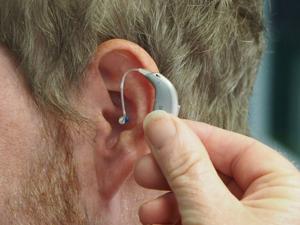In a significant breakthrough for the medical community, a novel gene therapy technique has shown promise in restoring hearing to individuals with congenital deafness or severe hearing impairment. This pioneering approach, which has been under development for several years, could potentially transform the lives of millions worldwide, offering hope where traditional treatments have fallen short.
The innovative therapy, developed by a team of researchers at a leading medical institution, targets the genetic root of hearing loss. By introducing a corrected version of a defective gene into the inner ear, the therapy aims to repair the damaged cells responsible for hearing. Initial trials have demonstrated remarkable improvements in both children and adults, marking a significant milestone in the field of audiology.
Understanding the Science Behind the Breakthrough
Gene therapy, a cutting-edge approach in modern medicine, involves altering the genetic material within a person’s cells to treat or prevent disease. In the context of hearing loss, researchers have focused on genes that are crucial for the development and function of the inner ear. The therapy uses a harmless virus to deliver the healthy gene to the cochlea, where it can begin to repair damaged hair cells.
According to Dr. Emily Carter, a leading audiologist involved in the study, “This therapy has the potential to change the landscape of treatment for hearing loss. By addressing the genetic cause, we can offer a more permanent solution compared to hearing aids or cochlear implants, which only amplify sound.”
The Impact of Hearing Loss and the Promise of New Treatments
Hearing loss affects approximately 466 million people worldwide, according to the World Health Organization. It can lead to social isolation, communication difficulties, and a decreased quality of life. While traditional devices like hearing aids and cochlear implants have provided relief for many, they do not address the underlying genetic causes of hearing impairment.
The introduction of gene therapy as a viable treatment option could revolutionize how hearing loss is managed. Experts believe that this approach could be particularly beneficial for congenital cases, where early intervention is crucial for language development and social integration.
“By the Numbers: 466 million people globally suffer from disabling hearing loss, with 34 million of these being children.” – World Health Organization
Expert Opinions and Future Directions
While the initial results are promising, experts caution that more research is needed before gene therapy can become a standard treatment. Dr. Jonathan Lee, a geneticist specializing in auditory disorders, notes that “the long-term effects and safety of this therapy must be thoroughly evaluated. However, the potential benefits are undeniable, and continued research is essential.”
Looking ahead, the research team plans to expand clinical trials to include a larger and more diverse group of participants. This will help determine the therapy’s effectiveness across different genetic mutations and age groups. Additionally, efforts are underway to refine the delivery method, ensuring that the therapy is both safe and accessible to patients worldwide.
Implications for the Future of Audiology
The development of gene therapy for hearing loss represents a significant advancement in the field of audiology. It highlights the potential of genetic medicine to address complex conditions that were once considered untreatable. As research progresses, there is hope that similar approaches could be applied to other sensory disorders, further expanding the possibilities of gene therapy.
In the meantime, the medical community remains optimistic about the future of hearing restoration. As Dr. Carter aptly puts it, “We are on the cusp of a new era in treating hearing loss. With continued innovation and collaboration, we can look forward to a future where hearing impairment is no longer a life sentence.”
The journey towards widespread adoption of gene therapy for hearing loss is just beginning, but the potential impact on individuals and society is profound. As trials continue and technology advances, the dream of restoring hearing to millions may soon become a reality.
About The Author
 Global Markets React as July 2025 Trading Begins Amid Economic Uncertainty
Global Markets React as July 2025 Trading Begins Amid Economic Uncertainty House Moderates Face Crucial Vote on Medicaid Cuts
House Moderates Face Crucial Vote on Medicaid Cuts Newmark Facilitates Major Recapitalization of Industrial Portfolio with Blackstone
Newmark Facilitates Major Recapitalization of Industrial Portfolio with Blackstone Tesla Shares Climb as Expected Delivery Numbers Boost Investor Confidence
Tesla Shares Climb as Expected Delivery Numbers Boost Investor Confidence Coca-Cola Celebrates 30 Years with Essence Festival in New Orleans
Coca-Cola Celebrates 30 Years with Essence Festival in New Orleans